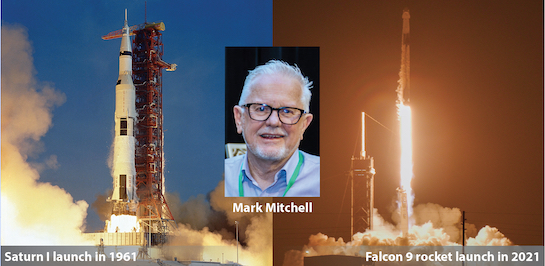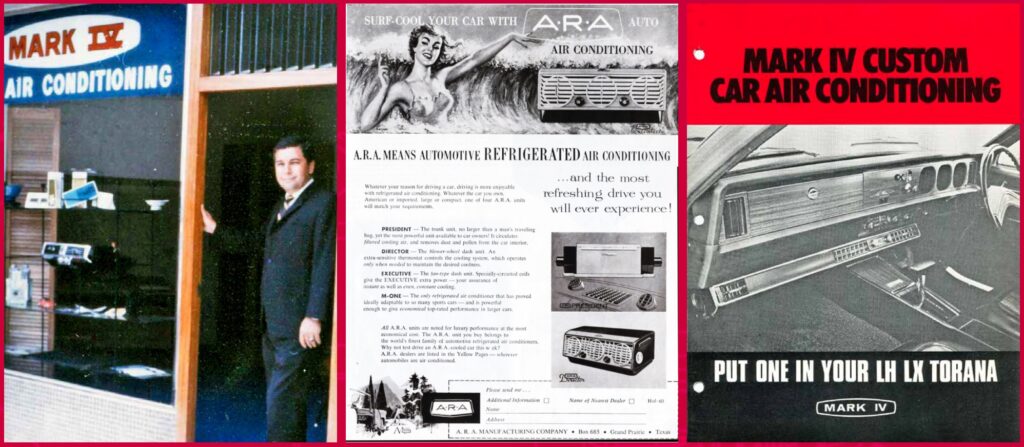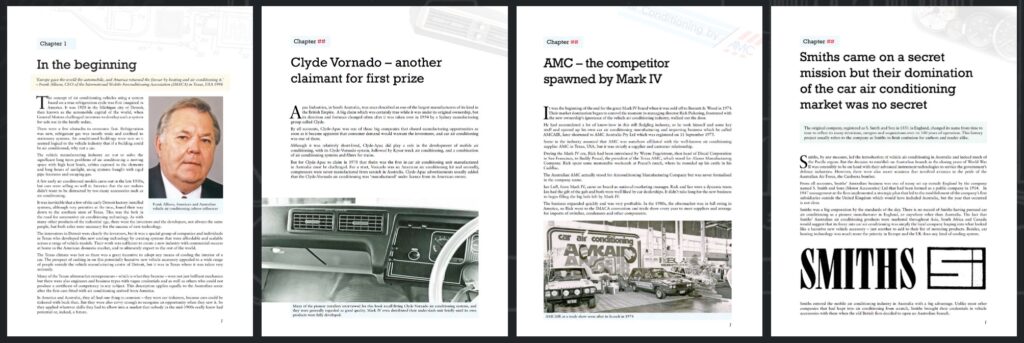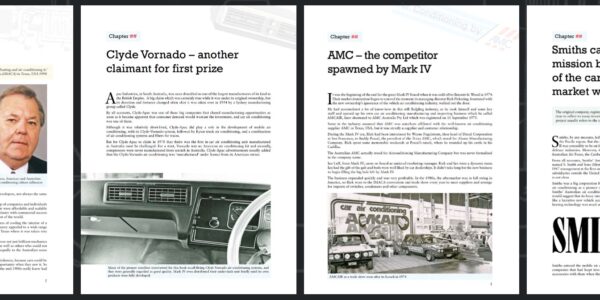Air Conditioning History Book project a chance for your name to (literally) be in the history books
- PostedPublished 31 August 2022
Six decades separate the launch of the two rockets pictured below. They look similar and both have the task of escaping Earth’s gravity so their payloads – sometimes including humans – can enter orbit.

The NASA Saturn and SpaceX Falcon are technical marvels of their time.
It is a similar story with the cold air coming from the vents of a car in the 1960s or that from an electric vehicle made today.
The result – receiving cold air from a vent – is largely the same, as are the fundamentals of the technology behind it, but to say nothing has changed couldn’t be further from the truth.
Launching a space rocket today is as much of a spectacle as it always was. The sheer possibility of space exploration will always fascinate and inspire, which is why the history of space travel is easy to look up.
Space travel may never become as taken for granted as that cold air coming from the vents of your car but once upon a time, air-conditioning a moving vehicle was a huge technical challenge to overcome. Much like sending an object, and even a person, into space.
The pioneers of automotive air-conditioning are now quite literally a dying breed. Since VASA started the Air Conditioning History Book project, a number of them have passed away. Thankfully humanity’s last chance to record the stories of the people who developed and commercialised the technology had started just in time.
Looking back at his career on the tools and when researching for the Air Conditioning History Book, VASA director Mark Mitchell realised that “as technicians when dealing with cars of all ages, types, and models we are constantly researching history”.
“Diagnosing a 10- or 20-year-old vehicle not only requires the precise research and lookup of a wiring diagram, component remove and replace procedure, or these days a firmware upgrade, but also involves historical knowledge about a vehicle – its quirks, failings, and good points,” he told the Wire & Gas 2022 audience.
In addition to providing an update on the Air Conditioning History Book, Mark’s Wire & Gas presentation served as the launch of a crowdfunding campaign that will enable the book to enter production.
“We are almost finished and we are at the costly layout and production stage, for which we will be asking contributions,” he told attendees at the Wire & Gas 2022 Gala Dinner.
“We’re asking for subscriptions from individuals right up to major corporate sponsorship from $50 up to $10,000. If you want to give us more than 10 grand, that’s absolutely fine.”
A new page on the VASA website has been set up to preview some of the completed chapters and raise money for the project’s completion.
“You can have your name mentioned in the back of this book for as low as $50, right up for corporate sponsorship, where you get yourself a full-page piece in the back of the book,” explained Mark.

“It is not an opportunity for an advertorial; what we’re saying to the corporate sponsors we’ve already spoken to is it’s an opportunity for a sponsor to outline its values, its mission, its predictions for the future. Maybe a reflection on its own history and perhaps some of the components in the book to give some sort of credible value to the existence of yourself and the industry. And everyone else involved in the book.”
Mark said that in return for supporting the project, sponsors will have their recognition and connection with the industry preserved for posterity.
“We are registering it through the National Archives, it will have an ISBN number, it will go into the Trove so once you’re in it’s there forever and it is a significant opportunity for a company or an individual to make a very significant statement about our industry your background, your values and the way you see things going in the future.”
As well as honouring the legacy of those pioneers in automotive air-conditioning, completion of the Air Conditioning History Book comes at a pivotal time in the industry the technology spawned.
Not only is the availability of cold air from vents expected and demanded by consumers, in the era of electrification the air-conditioning circuit is used to warm the cabin and manage the temperature of critical drivetrain components.
To achieve this in various vehicle types and for various climates around the world, new refrigerants are on the horizon.
“Our job is to make sure the cold air coming out our vents can continue, in the middle of a profound shift in system technologies and how heat is exchanged in a vehicle,” said Mark.
“In the shadow of climate change, overpopulation, polluted atmospheres and a world at times without energy, our task is formidable.”
Learn more about the Air Conditioning History Book and sponsorship here
- CategoriesIn Latest News
- TagsHistory




